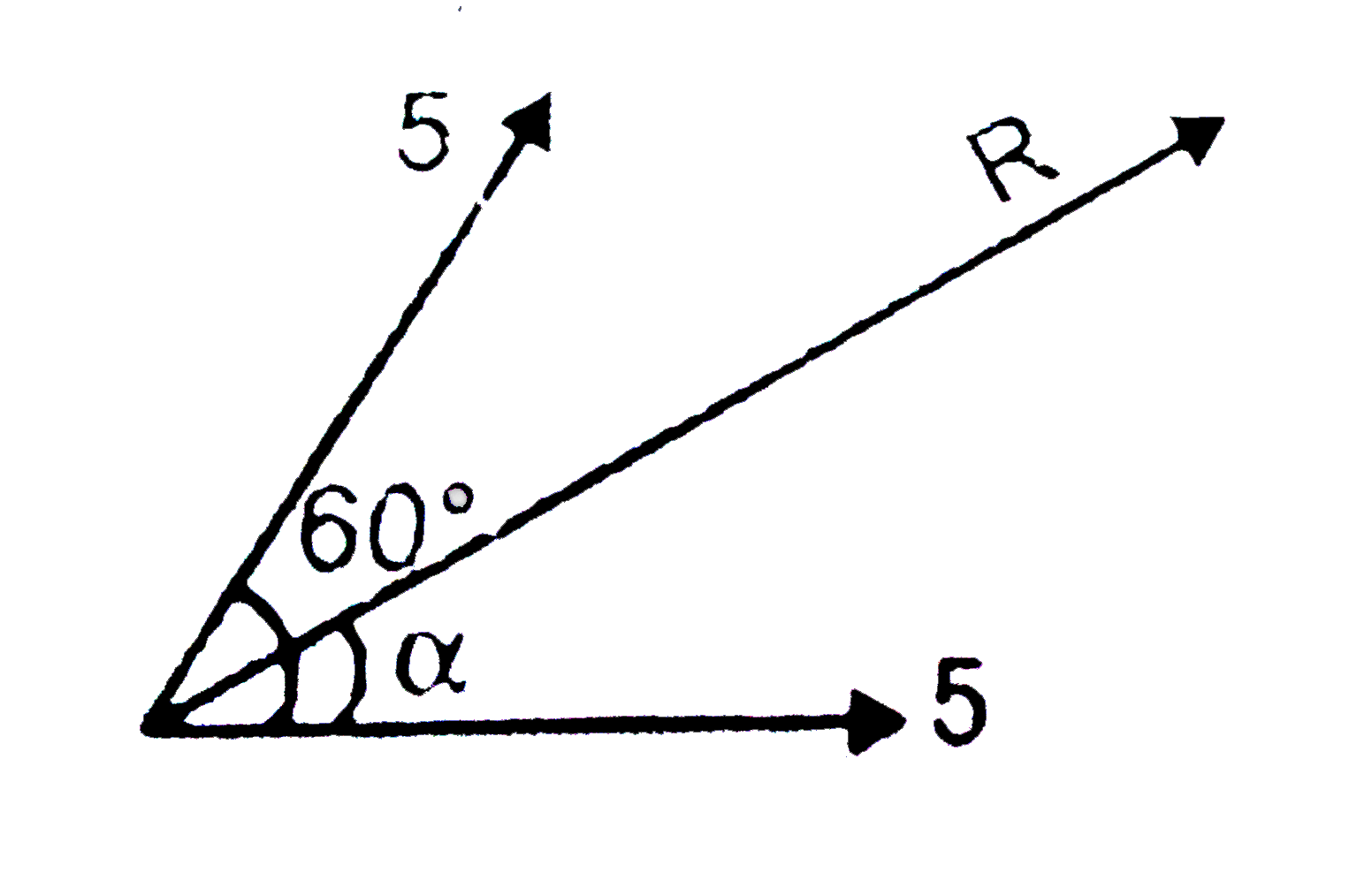When two right angled vectors of magnitude 7 units and 24 units combine, what is the magnitude of their resultant ?
To find the magnitude of the resultant vector when two right-angled vectors of magnitudes 7 units and 24 units combine, we can use the Pythagorean theorem. Here are the steps to solve the problem:
Step 1: Identify the vectors
Let the two vectors be:
- Vector P with a magnitude of 7 units.
- Vector Q with a magnitude of 24 units.
Step 2: Use the Pythagorean theorem
Since the vectors are at right angles to each other, we can find the magnitude of the resultant vector R using the formula:
R=√P2+Q2
Step 3: Substitute the magnitudes
Substituting the values of P and Q:
R=√72+242
Step 4: Calculate the squares
Calculate 72 and 242:
72=49
242=576
Step 5: Add the squares
Now, add the squares:
R=√49+576
R=√625
Step 6: Calculate the square root
Finally, calculate the square root:
R=25 units
Conclusion
The magnitude of the resultant vector is 25 units.
---
Let the two vectors be:
- Vector P with a magnitude of 7 units.
- Vector Q with a magnitude of 24 units.
Since the vectors are at right angles to each other, we can find the magnitude of the resultant vector R using the formula:
R=√P2+Q2
Substituting the values of P and Q:
R=√72+242
Calculate 72 and 242:
72=49
242=576
Now, add the squares:
R=√49+576
R=√625
Finally, calculate the square root:
R=25 units
The magnitude of the resultant vector is 25 units.
Topper's Solved these Questions
- BOOK - AAKASH SERIESCHAPTER - ELEMENTS OF VECTORSEXERCISE - NUMERICAL EXXERCISE (LEVEL -1)13videos
ELEMENTS OF VECTORS
- BOOK - AAKASH SERIESCHAPTER - ELEMENTS OF VECTORSEXERCISE - NUMERICAL EXXERCISE (LEVEL -2)21videos
ELEMENTS OF VECTORS
- BOOK - AAKASH SERIESCHAPTER - ELEMENTS OF VECTORSEXERCISE - SHORT ANSWER TYPE QUESTIONS10videos
ELEMENTS OF VECTORS
- BOOK - AAKASH SERIESCHAPTER - ELECTROSTATICSEXERCISE - ADDITIONAL PRACTICE EXERCISE (PRACTICE SHEET (ADVANCED) INTEGER TYPE QUESTIONS)5videos
ELECTROSTATICS
- BOOK - AAKASH SERIESCHAPTER - GEOMETRICAL OPTICSEXERCISE - ADDITIONAL PRACTICE EXERCISE (LEVEL-II PRACTICE SHEET (ADVANCED) INTEGER TYPE QUESTIONS)10videos
GEOMETRICAL OPTICS
Similar Questions
When two vectors of magnitudes P and Q are inclined at an angle θ, the magnitudes of their resultant is 2P. When the inclination is changed to 180∘−θ, the magnitudes of the resultant is halved. Find the ratio of P and Q.
View SolutionThe resultant of two vectors of magnitude 3 units 4 units is 1 unit. What is the value of their dot product. ?
View Solution
Knowledge Check
- Question 1 - Select One
If the sum of two unit vectors is a unit vector, then the magnitude of their difference is :
A√3B√2C√5D1√2
→A is a vector of magnitude 2.7 units due east . What is the magnitude and direction of vector 4 →A ?
View SolutionTwo vectors having equal magnitude of 5 units, have an angle of 60∘ between them. Find the magnitude of their resultant vector and its angle from one of the vectors.
 View Solution
View SolutionWhen two vectors a and b of magnitudes 'a' and 'b' respectively are added, the magnitude of resultant vector is always
View SolutionResultant of two vector of equal magnitude A is
View SolutionTwo vectors have magnitudes 3 unit and 4 unit respectively. What should be the angel between them if the magnitude of the resultant ils a. 1 unit, b. 5 unit and c. 7 unit.
View SolutionTwo vectors have magnitudes 3 unit and 4 unit respectively. What should be the angel between them if the magnitude of the resultant is (a). 1 unit (b). 5 unit and (c). 7 unit.
View SolutionTwo vectors have magnitudes 6 and 8 units, respectively. Find the magnitude of the resultant vector if the angle between vectors is (a) 60∘ (b) 90∘ and ( c ) 120∘.
View Solution
